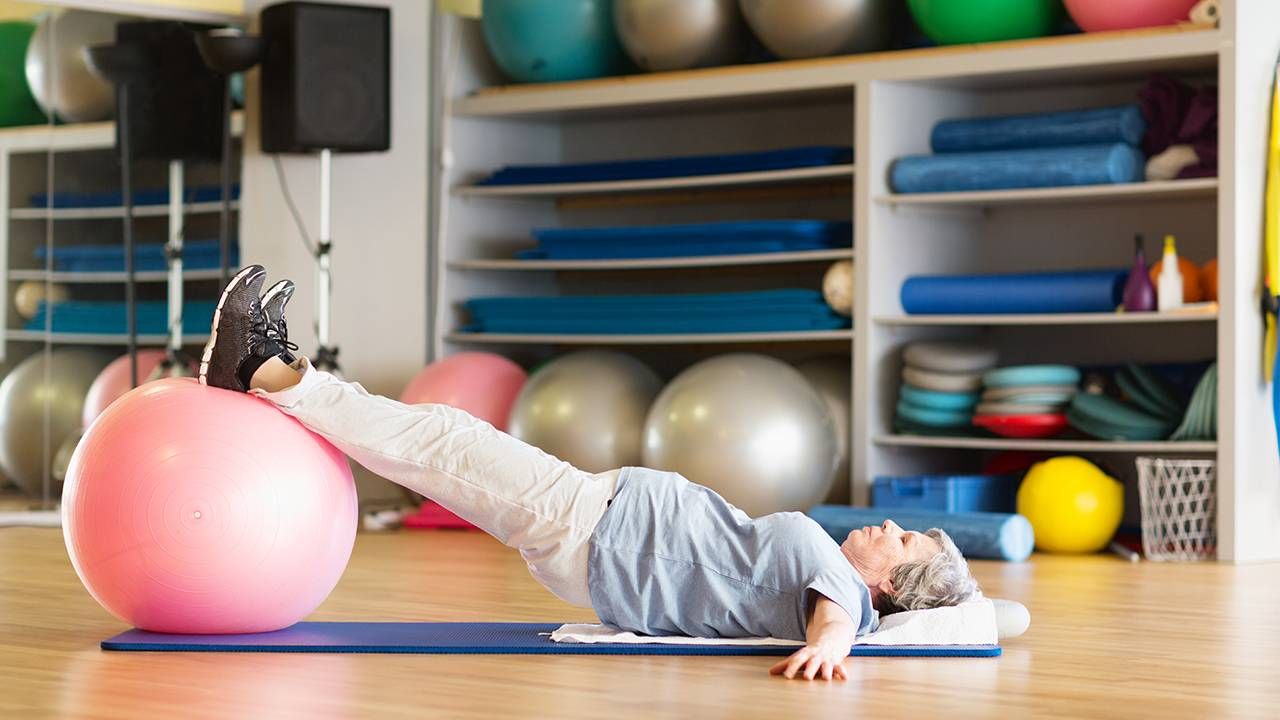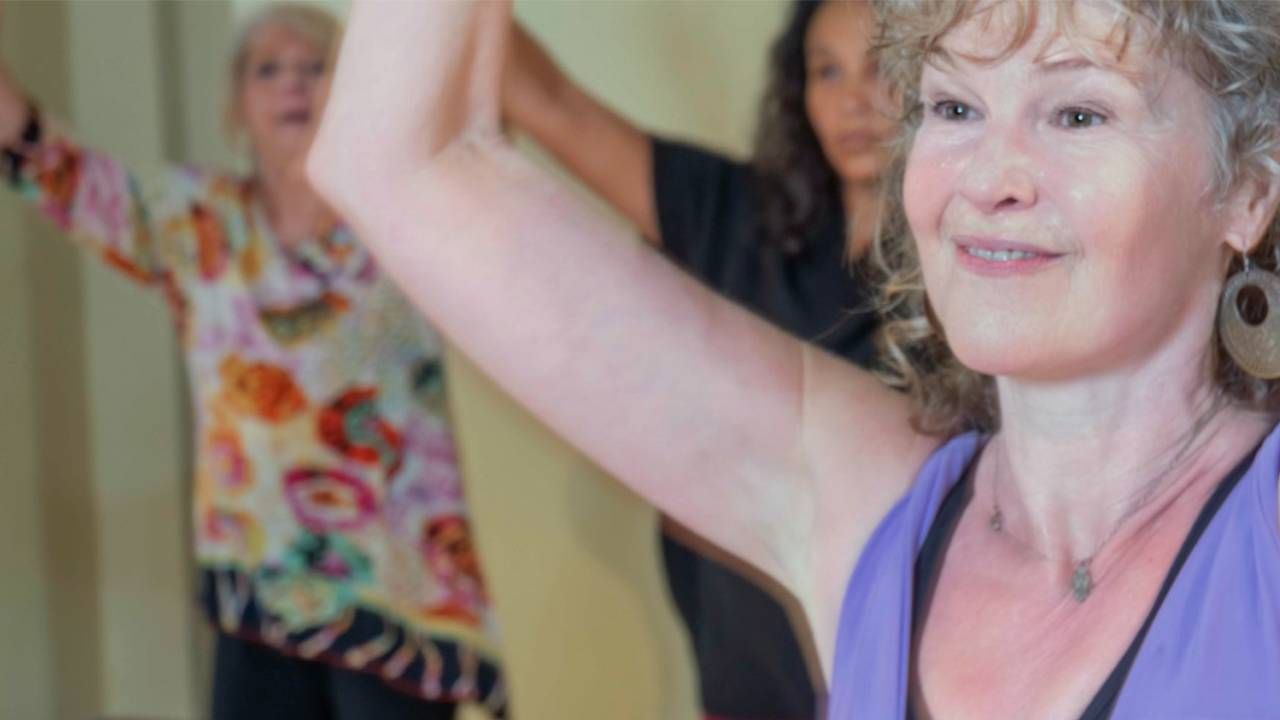My Story From Pelvic Pain to Gain
Pelvic pain may be hard to discuss with others, but no one should suffer in silence
At 52, my pelvis locked up just as COVID-19 locked us down. It started as a hitch in my giddy-up, advanced to a side-to-side waddle and then rendered me flat on my back. As a health and fitness instructor for over 20 years, I had done most of the right things to strengthen my core, so why was I suddenly experiencing pelvic pain? And how could I fix it?

My quest for answers took a winding path, and along the way I learned that pelvic pain is a common, and often preventable, condition among women my age. I also discovered how to retrain and regain my pelvis through determination and humility.
Pelvic pain is a catchall category that includes many conditions, from misalignment of the pelvis to snapping hip syndrome and pelvic floor dysfunction. Diagnosing the problem is often challenging because disease or other medical issues may contribute to pain. Injuries, scar tissue, pregnancy, inflammatory conditions and even physical or sexual abuse can play a role in pelvic health.
Women also have wider hips than men, and the extra strain that causes matters for activities like dancing, walking, sex and snowboarding — not necessarily in that order.
Don't Go It Alone
The search to discover the source of my pain took longer than expected, partly because I tried to manage it on my own through stretching and exercise. But lengthening the wrong muscle and strengthening something already in pain can exacerbate issues. My approach relieved my initial symptoms, but debilitating joint and lower back pain followed.
Why didn't I seek professional help as soon as my symptoms appeared? Pelvic pain is an uncomfortable topic, not a major health priority (I thought), and I preferred a private solution. Because of my sports medicine background, I knew how to work hard to fix a physical condition. But what if the solution did not need to be so challenging?
Pelvic pain is especially hard for patients to discuss when it causes incontinence or pain with intercourse, says Rachel R. Resch, a physical therapist at Synergy Physical Therapy and Movement Arts based in Ashland, Ore. She estimates that 75% of her clients are being treated for pelvic pain. Incontinence or sexual pain may not be the stated reason for their visit, but Resch says patients will often disclose these symptoms during their consultation as they become more comfortable.
The Pelvis After Pregnancy
Pregnancy and childbirth are significant contributors to pelvic pain.
"Once you are postpartum, you are always postpartum, and then life exists in the fourth trimester," says Dr. Kana Arreguin, a pelvic floor therapist at Bodywise Physical Therapy in Portland, Ore. "Women may not even know that they have weakened pelvic floor muscles and [that] they need to stretch, contract [and] control movements precisely."
Even if a client has never been pregnant, pelvic floor exams can help determine whether weak muscle tone or some other issue is causing a patient's pain. The exam assesses sensations and the condition of all three pelvic floor layers. From there, a treatment plan is born.
"Incontinence patients do very well with therapy, and pelvic pain patients can have significant improvement, even if not a hundred percent," says Arreguin.
Is Your Chair to Blame?
The increased sitting that Americans do, even physically fit ones, has also reduced core muscle strength and function. Most of the patients Resch treats have a weak gluteus medius posteriorly. The muscle, on the side of the buttocks, supports walking and posture. When the muscle is weak, it causes the thigh bone to rotate and provide less support to the hip. Resch refers to this as the "culture of the chair."
A sedentary lifestyle combined with badly made office chairs wreaks havoc on our bodies. Even worse, too much sitting can cause a neurological condition called butt amnesia or dead butt syndrome. It occurs when the connection or interweaving of connective and facial tissue is completely interrupted. These conditions can contribute to pelvic pain.

Prior to my injury, I sat more, too. At first, it was on a recumbent bicycle when I put so many miles on that stationary apparatus that it was anything but. This eventually caused a clicking and popping sensation when I squeezed my thighs together. Coxa saltens, or snapping hip syndrome, affects women more than men and occurs when the tendons are scraping over the hip socket.
After my diagnosis, I traded in the bike for other activities like walking and Pilates. I also traded my active job for a more sedentary one. But I hiked my hip up repeatedly to get into a tall desk chair at a medical office and did it on the left side more than the right, so I suffered.
Alas, after frustration, reluctant consultations with several medical professionals and multiple nights researching exercise equipment, I found the best regimen of exercise, therapy and stretches.
Get Moving and Grooving Again
For me, a 10- to 20-minute hydrotherapy soak, a daily walk and hamstring stretches morning and evening did the trick. I also purchased a leg exercise machine to coordinate the movement of my pelvic floor muscles, adductors and abductors and gluts.
I like to stand while performing the exercises because crunches can strain the pelvic floor muscles, according to a study published in the International Urogynecology Journal.
Resch recommends exercises that include strengthening the gluteus medius muscle. She says pelvic circles also increase core strength and reduce pain.
The Pelvic Floor First site has more information on safe pelvic floor exercises.
Arreguin suggests speaking with your primary care therapist or going directly for physical therapy. "Most women do not need a referral to seek care and greatly benefit from a pelvic floor exam," she says.
All three of us agree that no woman needs to go it alone or suffer in silence to get her pelvis grooving again.


